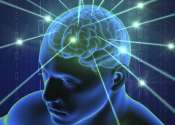Researchers find autism biomarkers in infancy
By using magnetic resonance imaging (MRI) to study the brains of infants who have older siblings with autism, scientists were able to correctly identify 80 percent of the babies who would be subsequently diagnosed with autism ...
Feb 15, 2017
0
117









